
Self-drive in Jujuy, North West Argentina
Salta and Jujuy offer one of Argentina’s best self-drive trips.
Quiet roads among multi-coloured mountains are pocked with quaint villages and historic vineyards.
Our figure-of-eight route includes the best of northwest Argentina and the Jujuy province.
Views range from Andean plateaus to wilderness areas where cacti appear as the only life form. Multi-coloured rocks often surround our routes, which include the scenic Calchaquíes valley, the famously long Ruta 40, and the Mountain of Seven Colours.
Use our route as a self-drive trip planner; we can tailor this self-drive tour to your needs. Take each day as an exploration, stopping where you wish at your own pace.
Self-drive road trip around Jujuy
You can explore the spectacular Humahuaca Gorge, which lies at the foot of the Hill of Seven Colours.
There are pre-Inca ruins, enormous salt flats at Salinas Grandes, and Andean cultures aplenty to see. Cachi sits among beautiful vineyards, while Cafayate is an excellent base for exploring vineyards.
You can take the famous Train to the Clouds at San Antonio de Los Cobres, zig-zagging over viaducts. Drivers love the chance to take on the curves. The winding Cuesta de Lipán and Cuesta del Obispo are just two highlights that pass through beautiful Andean scenery.
There are numerous stops, walks, and viewpoints throughout this self-drive trip. Explore the mountains, vineyards, and incredible geography of the Jujuy province the way you want.
The Bodegas, Wines, and Fine Dining of Cafayate
The Jujuy region is replete with bodegas, from rustic to charming, with chances for wine tastings. Try the area’s famous fruity white, Torrontes Rioja, or the world-renowned malbec. Find your favourite and order it at one of the many fine restaurants.
There are lovely museums that complement the modern artistry of artisans who produce beautiful textiles, ceramics, and paintings.
Trip Highlights
Print Share Download as PDF-
Enjoy fine food and wine tasting at scenic bodegas
-
Tilcara, Purmamarca and multi-coloured rock mountain scenery
-
Wonder at the Mountain of Seven Colours
-
Wander through artisanal markets and pre-Inca ruins
-
See the snow-white salt flats of Argentina
-
Self-drive at your own pace
-
Visit historic towns with quaint plazas, churches, and houses
-
Visit the UNESCO World Heritage Site, Humahuaca Gorge
It was an amazing trip and we are definitely going back. We had a wonderful time and everything went pretty smoothly with your brilliant planning and also with your partners.
Overall the hotels were good. The boys managed a game of golf at the Estancia and it was excellent. No one else on the course and a beautiful sunny day.
I would certainly would not hesitate in recommending Andean Trails and am extremely grateful to you for all your help and support throughout. Maybe somewhere else next year?
Cheers, Jaki
Jaki Andrews, self-drive Jujuy and Cafayate
Full Itinerary
Day 1: Drive Salta to Purmamarca: RN9 and the Mountain of Seven Colours (B)
Pick up a 4×4 vehicle at our Salta office, hotel, or airport. Free mileage and two authorised drivers for this self-drive trip.
We can help with maps and places to stop. Please note that the hire car doesn’t come with GPS.
Salta, with a population of around 700,000, is a medium-sized city. Fortunately, its predominantly grid road system makes navigating and driving through easy.
The first target is the scenic Route 9 (RN9), a road traversing Buenos Aires to the Bolivian Border. Today’s section takes you northwards through the Yungas, an area of dense vegetation with many rivers and waterfalls.
As you climb, the forest drops off, and you leave it behind, entering Quebrada de Humahuaca. This narrow mountain valley is famous for its dramatic rock formations and indigenous Quechuan villages. There’s plenty of time to cover today’s distance, so take stops and photos.
Today’s destination is Purmamarca (2,324m/7,625ft), and our hotel is close to the Mountain of Seven Colours.
Purmamarca and the Mountain of Seven Colours
Purmamarca’s church and colourful main square are worth visiting alongside the town’s main attraction, the Mountain of Seven Colours. This geological wonder was formed by various minerals and sediments covering the area over millions of years. There are verdant greens, deep purples, and bright whites to spot among the yellows, pinks, browns, and oranges.
Sunrise and sunset make for great light, as does the brightness of midday with the cobalt-blue background of the sky.
Self-drive distance: 112 miles / 180 km approx.
Day 2: Tilcara — Humahuaca — Hornocal — Purmamarca (B)
A short drive north of Purmamarca lies Tilcara (2,465m/8,087ft), a lovely little town with two plazas, a church, and the pre-Inca ruins of Pucará to visit. Tilcara is home to a museum that houses funeral vases, mummies, and jewellery found in northwest Argentina.
The ancient settlement of Pucará gave the original inhabitants a panoramic view of the Quebrada de Humahuaca gorge. It’s now a UNESCO World Heritage site. Allow 15 minutes to walk from Tilcara to Pucará, then explore this once-fortified town.
The site was settled around the 12th century, although traces of habitation date back more than 10,000 years. People were renowned warriors and experts in weaving, pottery, and agriculture.
Quebrada de Humahuaca
Continue driving north to Humahuaca, close to Bolivia and Chile borders.
Humahuaca, a small town nestled alongside the Río Grande, has a popular artisanal market and an imposing monument that marks Argentina’s independence. Created by Ernesto Soto Avendaño, the Independence Monument pays homage to the gauchos and indigenous people that fought to liberate Jujuy.
In the afternoon, the 4×4 comes into its own on a gravel road to Hornocal, an impressive bank of coloured mountains classified as a World Heritage Site by UNESCO. A lookout at some 4,000m/13,123ft offers remarkable views.
Retrace your route to Purmamarca and your hotel.
Note: Iruya lies around three hours north of Tilcara and is best added as an extra overnight. The rainy season (Nov-Mar) may make the mountain road to Iruya impassible.
Self-drive distance: 99 miles / 160 km approx.
Day 3: Salinas Grandes — San Antonio de los Cobres — Salta (B)
Today’s multi-transport options provide some exhilarating journeys. Leaving Purmamarca, the excitement begins on the zig-zags of the Cuesta del Lipán road, part of RN52.
The imposing Quebrada de Sepultura and Lipán line the winding, asphalted route as the landscape becomes barren. Keep your eyes out for llamas and panoramic views. Be sure to stop at the highest point, the Abra de Potrerillos at 4,170m/13,691ft, where a small cement cairn marks the spot.
You’ll know once you reach the salt flats as a shimmering white desert stretches before you.
Salinas Grandes
The Salinas Grandes are impressive, with some 212 square kilometres of salt flats up to 200 miles/320 kilometres wide at points.
Remember to take it easy on the salt flats; the average altitude is 3,450m/11,319ft.
Watch how locals harvest salt from this harsh environment. The salt is still extracted for human consumption, and you can browse various salt sculptures to take home as keepsakes. These salt flats are as impressive as Uyuni.
San Antonio de los Cobres
The next destination is San Antonio de Los Cobres, a typical highland Andean town. From here, you can choose to ride the Train In The Clouds.
San Antonio has a museum and church to visit, but the train draws most visitors. The train climbs to a breathtaking 4,220m/13,845ft as it climbs the Andes to a high-altitude plateau.
Initially, the project — started more than 100 years ago — was to join northern Argentina with Chile’s coastal town of Antofagasta, crossing the Andes. While that success was achieved, nowadays, the line carries only occasional freight, and there is no passenger service. It is the fifth-highest railway line in the world and the third-highest in South America.
Visitors can catch the Tren de Los Nubes, The Train in the Clouds, from San Antonio de Los Cobres to the photogenic La Polvorilla viaduct, at 4,220m/13,845ft. The viaduct spans 223m/732ft and reaches 63m/207ft in height.
Fantastic views and the chance to spot condors, vicuñas, guanacos, and llamas are just some of the reasons to take this stunning train journey.
The afternoon sees you following RN51 back to Salta and your hotel, shadowing the train track through the picturesque Quebrada del Toro valley. We’ve driven the top loop of our figure of eight.
Self-drive distance: 202 miles / 325 km
Day 4: Quebrada de las Conchas — Devil’s Throat — Cafayate (B)
A new day, a new Quebrada; this time, it’s the terracotta-coloured Quebrada de las Conchas.
From Salta, head south on RN68, heading towards Cafayate. The total driving distance is around 110 miles / 170 km with several en route stops, including a good couple of hours for a leg-stretching walk if desired.
After leaving the city, you’ll come across the Quebrada de las Conchas viewpoint after about 90 minutes. This is a great spot to stroll, take pictures, and enjoy a picnic.
Keeping south on the RN68, there are three big-ticket stops in quick succession. They come in this order: the Devil’s Throat, the Amphitheatre, and Yesera. Each is accessible from the main road, followed by a short walk.
Devil’s Throat
The Devil’s Throat (Garganta del Diablo), all reds and oranges, leaves the visitor with the impression of having walked into some bestial thorax. The site sits among a fantastic landscape. Sitting and contemplating the wind that runs through the throat is mesmerising if you arrive solo.
Amphitheatre
The Amphitheatre (El Anfiteatro) offers beautiful acoustics, hence its name. There are lovely colours and rock formations that augment the setting. Occasionally, people play instruments or sing within the Amphitheatre with stunning results.
La Yesera
La Yesera brings to mind the rock formations found in the United States Monument Valley, smaller but in brighter colours. Wander around the stacks near the road or take an optional 2-3 hour hike to El Paso.
El Paso trek (optional)
Hike along a canyon to El Paso lookout (1,470m/4,823ft) through colour rocks and mountains. The geological formations here are so vivid it’s hard not to believe they are alive and actually some 70 million years old.
Follow the main path into the canyon and return the same way to your car. Please note that while suitable for confident trekkers to self-guide, we recommend taking a guide or a hiking map and being sure of your routes.
After exploring the wonders of Quebrada de las Conchas, it’s time to head to Cafayate (1,700m/5,600ft) and your hotel.
Self-drive distance: 112 miles / 180 km
Day 5: The Vineyards of Cafayate (B)
We recommend spending at least one day in Cafayate to explore the local vineyards. You can hire bikes in town and pedal between bodegas, hire taxis, or walk.
About Cafayate
Cafayate is arguably Argentina’s second best-known wine region after Mendoza. The town’s high altitude makes its wines unique in one of the world’s highest regions, apt for growing grapes.
The sun is intense in Cafayate, making grapes grow thick skin as protection. Days are followed by cold desert nights that balance out the daytime rays and give the area a long growing season.
Dry soil means fewer grapes, a bonus for winemakers as they get fruits with greater concentrated flavours. Irrigation comes from meltwater from the nearby Andean peaks.
Here are some classic bodegas to visit for wine tasting and meals. We recommend booking tours in advance (please ask for the extra cost) or choosing your own adventure.
Bodega El Esteco
The classic bodega is within walking distance of the centre. It offers horse riding on top of wine tasting and fireside wine events. Good food is served, too, with local cheeses and empanadas popular.
Famous varieties include malbec, cabernet sauvignon and merlot.
La Estancia de Cafayate
This estancia has the lot: a hotel, golf course, spa, tennis centre, polo club, and horse riding options. There is a fine dining area as well as wine tasting to enjoy.
Piattelli Vineyards
A short way (1 mile/1.65km) from town, Piattelli is one of the most famous vineyards in Argentina. Tours and wine tasting must be booked in advance.
Day 6: Cafayate — Colomé — Cachi (B)
Today you start to close the bottom loop of this tour’s figure of eight outline. It’s also when you drive along the mythical RN40, Ruta 40. This road stretches over 3,000 miles/5,000 kilometres from Argentine Patagonia to Jujuy, hugging the Andes all the way.
RN40 is the longest road in Argentina and rivals the world’s most extensive routes, like Route 66 in the US and Australia’s Stuart Highway. Today, combine fantastic mountain scenery with quaint and historic Andean villages.
Visit Andean Villages
From Cafayate, it’s north along the RN40 into the Quebrada de la Flechas. In Spanish, flechas means arrows, and the colourful mountains mimic an arrowhead’s shape along this valley.
There are many interesting places to visit today, so make sure you set off in good time.
Animaná
There are many walks around Animaná, plus a visual arts museum with sculptures and ceramics.
Look out for vino torrontés, an intense and fruity white wine.
San Carlos
Stop here to see a historic church and browse artisanal products in the Camino de Los Artisanos.
Angastaco
This town is home to a lovely church and a fascinating archaeological museum. It is a good stop for buying artisanal wines.
Molinos
The town’s San Pedro Nolasco de Los Molinos church has a cactus roof! For art, the James Turrell Museum is a must. Many people also visit the Colomé winery, the oldest vineyard in Argentina—wine tasting by reservation only (let us know in advance).
Seclantás
A charming town known for the quality of the Salteños ponchos woven here. Plaza de La Junta is a palm tree-laden and green place to people-watch. Or perhaps you’ll visit the colonial church, Nuestra Señora del Carmen.
Many folks enjoy the food in Seclantás, especially the empanadas, tamales (steamed maize dough, filled with meat and beans), and humitas (slowly steamed ground maize).
Full of Andean culture, your day’s journey ends at Cachi (2,530m/8,300ft), a town at the confluence of the Cachi and Calchaquí rivers. There is an archaeological museum here, a historic Spanish colonial church, and traditional homes made of adobe.
Self-drive distance: 99 miles / 160 km
Day 7: Cachi — Salta, drop off vehicle (B)
The final part of the figure of eight is drawn today, taking the car back to Salta through the Los Cardones National Park. There’s an incredible straight stretch of road matched only by the curving beauty of another.
You take the famous Tin Tin straight from Cachi, a 10-mile / 15-kilometre road that follows an ancient route. Nowadays, it is part of provincial route 33, RN33. A favourite photo is the seemingly never-ending, straight line of tarmac disappearing into the distance.
Later come the curves as you climb to a viewpoint, Piedra del Molino, the road’s highest point (3,348m/2,080ft). The descent is a driving dream with many twisting curves down the Cuesta del Obispo, surrounded by velvety mountains and a dizzying precipice. Take time to stop for photos or visit small towns you may see en route.
Soon the lights of Salta welcome you. Drop off your vehicle, and enjoy Salta (hotel not included), the empanada capital of the world, with fine wines, museums, and plazas.
Self-drive distance: 99 miles / 160 km
Prices From $1,745 / £1,419 per person
What's Included?
Car rental (4×4) with unlimited mileage and two authorised drivers, hotels and meals as listed, car insurance (coverage of theft, fire or destruction of the vehicle and damages against third parties up to USD 10,000), breakfast at hotels
What's Not Included?
International or domestic flights, tips, tours, wine tasting, petrol/diesel for car, entry fees to attractions, meals other than stated, alcoholic or soft drinks, transfers
Accommodation
We’ve selected 3-4* hotels with charm and character. Example hotels include:
- La Comarca in Purmamarca
- Hotel Inkai in Salta
- Patios de Cafayate in Cafayate
- Merced del Alto in Cachi
Tour Staff
This tour is self-guided. Please let us know if you would like a guided tour.
Meals
Vegetarians and many other dietary requirements are catered for without problems. Please let us know in advance of any needs you have.
Hotel breakfasts usually include bread, jams, honey, yoghurts, tea, coffee, and fresh juices, although this varies from hotel to hotel.
In Argentina, red wine, BBQs, meat and pizzas/pasta feature heavily in restaurants.
Activity Level
Unless you add it to your trip, there is no strenuous activity, but the most critical factor is that much of this tour takes place at high altitudes.
Most days involve 3-5 hours of driving and short walks of 5-20 minutes to attractions. Longer walks may be added should you choose.
Practical Information
Introduction to Argentina
Argentina is a land of contrast.
Nothing states this better than the fact it features the highest point in the South America, Aconcagua, and the lowest, Salinas Chicas, 40m below sea level.
Its vastness – it is the eighth largest country in the world – and diversity are just part of the appeal. A fantastic culture of fine wine and dining sits alongside its adventurous and beautiful landscapes.
The local’s cheery disposition and fantastic word plays add to the enjoyment of being in this fascinating country.
The name Argentina derives from argentinos, the Ancient Greek diminutive (tinos) form for silver (argentos), which is what early Spanish explorers sought when they first reached the region in the sixteenth century.
There are distinct regions of Argentina, from the Andean culture of the North West to the rancho lifestyle of the plains of Patagonia to the eternally seductive Buenos Aires.
Geography of Argentina
Argentina’s neighbours are Bolivia, Brazil, and Paraguay to the north, Uruguay to the north east and Chile to the west. In the east Argentina has a long South Atlantic Ocean coastline.
The central region of Argentina is the rich plain known as La Pampa.
There is jungle in the extreme northeast while the southern half of Argentina is dominated by the flat to rolling plateau of Patagonia.
The western border with Chile is along the rugged Andes mountains, including Aconcagua, the highest mountain outside the Himalayas. Close to Aconcagua lies Mendoza, an area famed for its fine wine production.
The western Cuyo regions at the base of the Andes are mostly rocky desert.
Most Antarctic cruises embark and disembark in Ushuaia, at the tip of South America, allowing access to the South Pole, South Georgia and also the Falkland Islands.
Kit list
Good kit is vital for every trip.
Book with Andean Trails and get 15% off Páramo’s fantastic ethical and high performance outdoor gear.
Overview
Argentina is the eighth largest country in the world, and has a myriad of climates from humid tropics to bracingly cold Patagonia.
When planning for these changeable climatic conditions you will encounter across Argentina, layering is the most practical and versatile clothing system.
The sun is very strong throughout the country, so good sun cream, a hat and sunglasses are vital. Summer in the north of the country means t-shirts and shorts.
It can also get very cold at night time especially in the mountains. Jumpers, fleeces and warms hats – which you can buy there – are also essential.
Give plenty of thought to kit selection, and try to keep weight down.
Below is a more detailed guide.
Detailed kit list
- Medium weight parka or a down jacket.
- Waterproof jacket and trousers. The jacket needs to be water proof and roomy. Side-zip pants are recommended.
- 2-3 long-sleeve shirts – no cotton
- 2-3 short-sleeve T-shirts – no cotton
- 2 pair of hiking trousers- cotton or synthetic material (no jeans)
- 1 fleece or sweat trousers (for cold evenings)
- 2 pair hiking shorts
- Long thermals – synthetic or wool – light to medium weight top & bottoms.
- 2-3 mid-weight (wool or synthetic) socks.
- 2-3 liner socks if needed
- Athletic-type socks, several pairs, city use
- Hiking boots that are waterproof and well broken-in.
- Running/tennis shoes or sandals are very comfortable when you are in cities
- 1 lightweight wool sweater or windproof fleece
- 1 wool or synthetic warm hat.
- 1 light sun hat with a wide brim.
- 1 pair of medium-weight wool or synthetic gloves
- Broad-brimmed sunhat, essential.
- Sunglasses with UV filter.
- Scarf for cold.
- Bandanna – to protect neck from strong sun.
- Daypack (at least 30 litres). Comfortable and with waterproof lining or cover.
- Water bottle (2 litres approx.) & purification tablets.
- Personal first-aid kit to include: painkillers, plasters (band-aids), moleskin, anti-biotic cream, general antibiotics (ask your GP), after-bite (tiger balm), anti-diarrhoea tablets, throat lozenges, re-hydration salts & personal medication.
- Insect repellent (just in case)
- Towel & wash-kit.
- Wet Wipes/antiseptic hand-wash cream.
- Sunscreen (factor 30+) and lip salve.
- Head-lamp (plus spare bulb and batteries).
- Penknife.
- Travel alarm clock.
- Plastic bags – ‘Zip-loc’ & tough bin liners.
- Camera and film / memory cards (take at least twice the amount you think you will need!).
- Book, e-book, mp3 player/ipod or other to help pass the time.
- Binoculars.
- Spanish/English phrasebook.
- Extra snacks i.e. cereal bars or favourite chocolate bars.
Miscellaneous others
- Money belt.
- Passport.
- U.S. dollars cash, mixed-denomination notes, undamaged and unmarked.
- ATM cash/credit card.
- Any inoculation certificates.
- Personal & medical insurance certificates.
- Presents e.g. Postcards from home.
- Comfortable clothes for travel, smart clothes for night life, especially in big cities.
Weather in Argentina
Climate
Argentina’s seasons are the reverse to the northern hemisphere, with summer running from October to March, and winter from May to September.
Buenos Aires and the Pampas in the north are temperate; cold in the winter, 5-15°C, and hot and humid in the summer, 17-27°C, the warmest and most humid being December to February. Spring and Autumn are lovely times to visit Buenos Aires.
The best time to visit Iguazu Falls is from January to March – the rainy season, this is when water flow of the waterfall is greatest, but the waterfall is amazing at any time of year. The hottest months in Iguazu Falls are October through April with lows of 20°C and highs of 32°C. Winter sees this fall to highs of 22°C and occasional lows of 12°C, with cooler nights. Being tropical and humid, there is always the chance of rain in Iguazu.
Bariloche is nestled in Argentina’s Lake District and is built next to the cold water Lake Nahuel Huapi. During the summer, daylight extends from 6am to 10pm and temperatures fluctuate from 5-20°C, the warm days making for ideal conditions for exploration. In the winter, snow abounds for skiers and daylight is from 9am to 7pm, city temps varying from just above to just below freezing, with much cooler temperatures in the mountains.
The rain-shadow effect in Bariloche means weather conditions are relatively dry and stable. Summer rainfall in the town of Bariloche is low (average 5 days precipitation a month).
ATOL holiday protection
Andean Trails has 25 years of experience of putting together the best South America holidays.
We pay a fee to the CAA for every licensable passenger we book since we hold an Air Travel Organiser’s Licence granted by the Civil Aviation Authority. In the unlikely event of our insolvency, the CAA will ensure that you are not stranded abroad and will arrange to refund any money you have paid to us for an advance booking.
We also offer ATOL (Civil Aviation Authority) protected holidays to give our customers peace of mind when booking and travelling.
When you buy an ATOL protected air holiday package from Andean Trails Ltd you will receive a Confirmation Invoice from us confirming your arrangements and your protection under our Air Travel Organiser’s Licence number 6275.
You can read more about ATOL, who is covered and what protections you have if not ATOL-covered, on our ATOL page.
What is ATOL?
The CAA’s ATOL scheme offers protection to your money and your holiday if you book with us. Not everybody is covered (see ‘Who is covered?’ for more), as you must purchase an ‘air package holiday’ with Andean Trails to be protected.
And ‘air package holiday’ is defined as including a flight and some ground services (hotel, transfer, trek etc). This is also known as an ‘ATOL-protected holiday’.
Who is covered?
To be covered by ATOL, you must book a flight and some ground services with us and be from the UK. If you are from the UK and only book ground services and no flights, you are not covered by ATOL (see below for more on how non-ATOL clients are covered).
If you are outside the UK and buy flights with us, you will be ATOL protected IF any of the flights booked with Andean Trails touches/stops in the UK at any point during your holiday package booked with us.
If you buy your flights elsewhere, please check with that agent if you are ATOL protected. Be careful with online flight purchases and make sure you know what protection you have, if any, before paying for flights.
Not all holiday or travel services offered and sold by us will be protected by the ATOL scheme. Please ask us to confirm what protection may apply to your booking.
For land only holidays not involving any air travel, in accordance with “The Package Travel, Package Holidays and Package Tours Regulations 1992”, all UK passengers booking with Andean Trails Ltd. are fully protected for the initial deposit and subsequently the balance of all money paid to us, arising from cancellation or curtailment of travel arrangements due to the insolvency of Andean Trails.
I’m not ATOL covered, what protection do I have?
If you are not ATOL covered, any payments you make to us go to a Trust account.
We can only access this money once your tour has been completed, meaning that if anything happens to Andean Trails Limited while you are on holiday, then your money is secure and you can either complete the trip or be able to make it home.
If you pay for your holiday with a credit card, some offer payment protection – please check with your cardholder.
You also should have cancellation protection written into your insurance (which we recommend you have at the time of booking) in case you need to cancel.
North West Argentina
North west Argentina is one of those places that is still off the beaten track but when you get there you wonder why.
The main gateway is the city of Salta – famous for its pasties, known locally as empanadas.
Places to visit are Cafayate – famous for its wines and the “Quebrada de Las Cochas” with its incredible rock formations.
North of Salta don’t miss Humahuaca with its multicoloured hills, Tilcara with its Pukara (pre-Columbian fortress) and the Salinas Grandes salt flat.
Prices From $1,745 / £1,419 per person
2024 guide price only
Please ask for more info
Trip runs with a minimum of two people
Shorter/longer stays possible

Dates & Prices
Prices From $1,745 / £1,419 per person
2024 guide price only
Please ask for more info
Trip runs with a minimum of two people
Shorter/longer stays possible
Can’t find what you’re looking for? Get in Touch
+44 (0)131 378 5593
+44 (0)131 554 6025













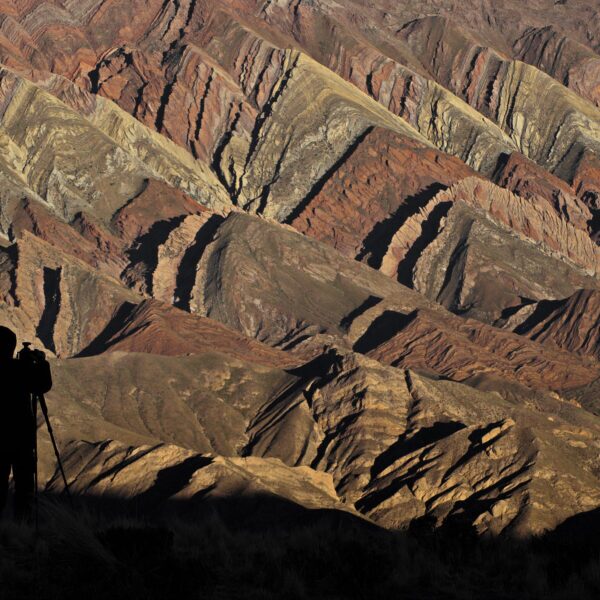


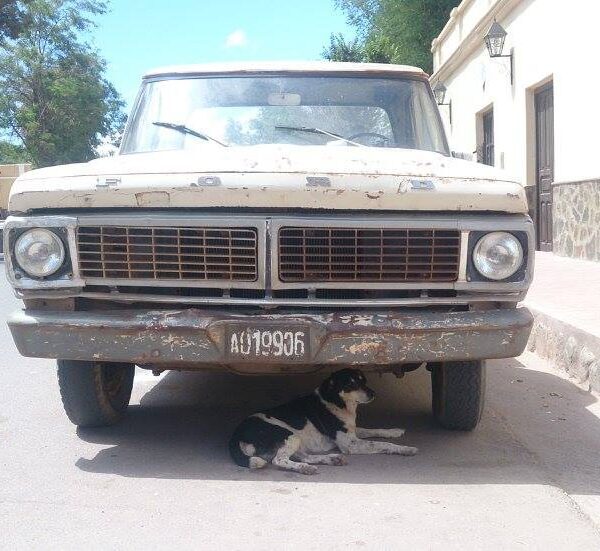
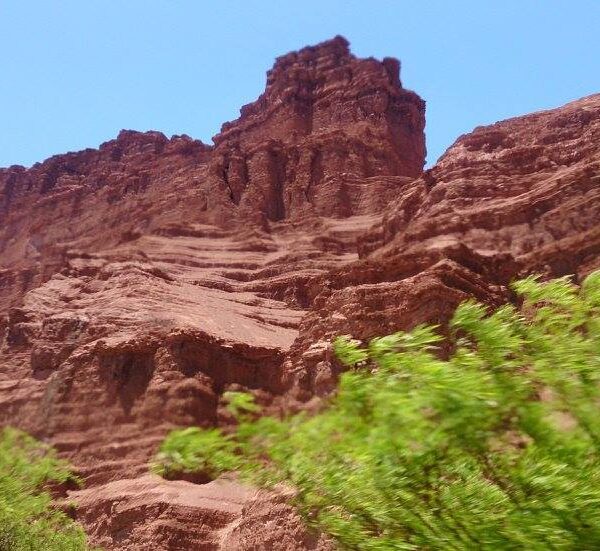




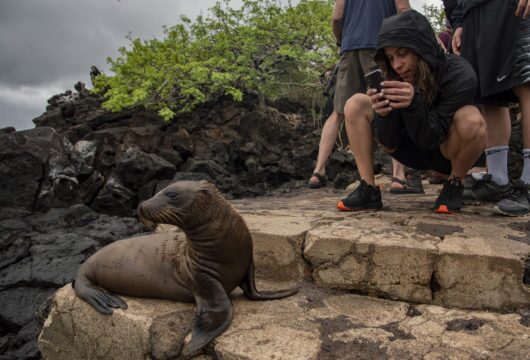
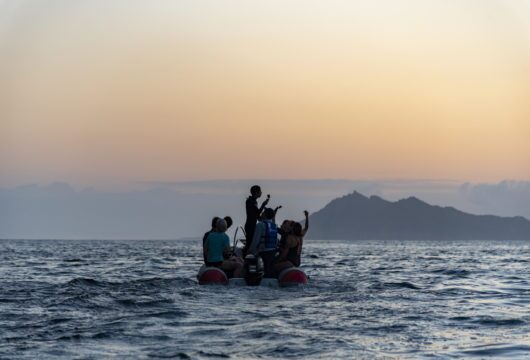







 a Group Tour
a Group Tour  a Tailor Made Tour
a Tailor Made Tour 











